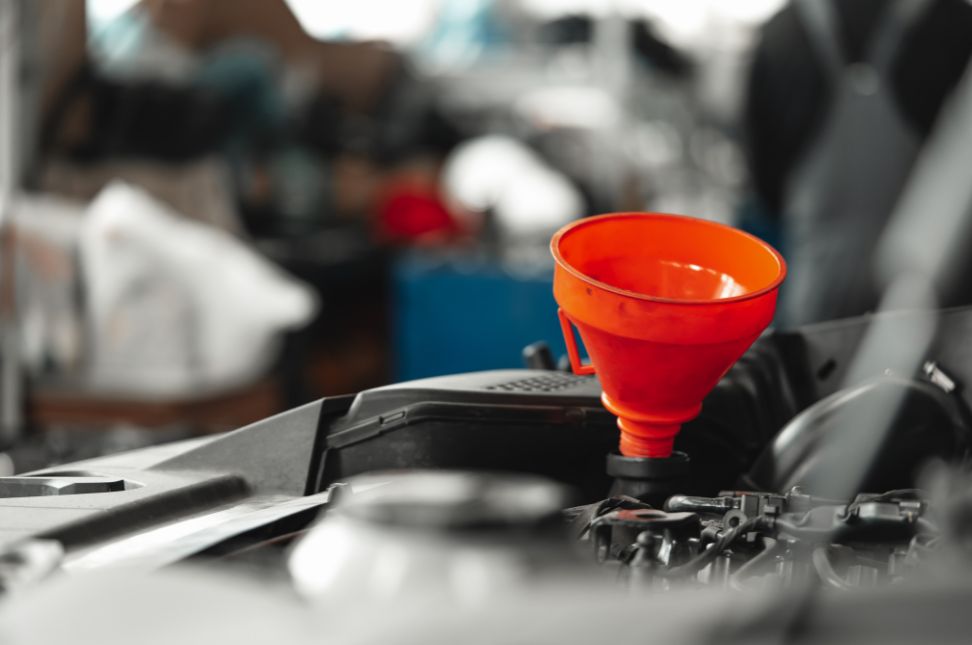Changing your car’s oil at home can save you money and ensure your vehicle runs smoothly. Knowing how to change your car’s oil at home is a valuable skill for any car owner. This guide will walk you through the process, providing clear, easy-to-follow instructions.
Why Change Your Oil?
Regular oil changes are essential for maintaining your car’s engine. They help:
- Prevent Engine Wear: Fresh oil reduces friction between engine parts.
- Improve Performance: Clean oil ensures smooth engine operation.
- Extend Engine Life: Regular oil changes help avoid costly repairs.
What You’ll Need
Before you start learning how to change your car’s oil at home, gather the necessary tools and materials:
- New Oil: Check your car’s manual for the recommended type and amount.
- Oil Filter: Ensure it’s compatible with your vehicle.
- Oil Filter Wrench: To remove the old filter.
- Socket Wrench: For the oil drain plug.
- Oil Drain Pan: To catch the old oil.
- Funnel: For pouring new oil.
- Jack and Jack Stands: To lift the car safely.
- Gloves and Rags: For cleanliness and safety.
Step-by-Step Guide
1. Prepare Your Vehicle
To begin, park your car on a flat surface and engage the parking brake. Warm up the engine for a few minutes. Warm oil drains faster and more completely.
2. Lift the Car
Using the jack, lift the front of the car and secure it with jack stands. Never rely solely on the jack; jack stands are crucial for safety.
3. Drain the Old Oil
Locate the oil drain plug under your car. Place the oil drain pan beneath it. Use the socket wrench to remove the drain plug, allowing the oil to drain into the pan. This step is crucial in how to change your car’s oil at home. Be patient and let all the oil drain out.
4. Remove the Oil Filter
Using the oil filter wrench, remove the old oil filter. Be cautious, as it may contain hot oil. Allow any remaining oil to drain out.
5. Install the New Oil Filter
Take the new oil filter and lubricate its rubber gasket with a bit of new oil. This ensures a good seal. Screw the new filter into place by hand, then tighten it an additional three-quarters turn with the oil filter wrench.
6. Replace the Drain Plug
Once the oil has completely drained, wipe the area around the drain plug hole and replace the drain plug. Tighten it securely with the socket wrench, but avoid over-tightening.
7. Add New Oil
Lower your car from the jack stands. Open the hood and locate the oil filler cap on the engine. Insert the funnel and pour in the new oil slowly. Refer to your car’s manual for the correct oil type and amount.
8. Check the Oil Level
After adding the oil, wait a few minutes for it to settle. Use the dipstick to check the oil level. Add more oil if necessary until it reaches the full mark on the dipstick.
9. Dispose of the Old Oil Properly
Never pour old oil down the drain or into the trash. Take it to a recycling center or an auto shop that accepts used oil.
Tips for Success
- Use the Right Oil: Always use the oil type recommended in your car’s manual.
- Regular Schedule: Change your oil every 3,000 to 5,000 miles, or as recommended by your manufacturer.
- Stay Safe: Always use jack stands, wear gloves, and work in a well-ventilated area.
Benefits of Changing Your Oil at Home
Learning how to change your car’s oil at home has several advantages:
- Cost Savings: DIY oil changes are cheaper than professional services.
- Convenience: No need to schedule service appointments.
- Satisfaction: Gain confidence and skills in car maintenance.
Conclusion
Knowing how to change your car’s oil at home is an empowering and practical skill. By following this guide, you can ensure your car runs smoothly and efficiently. Regular oil changes are a key part of vehicle maintenance, and doing it yourself can be both rewarding and cost-effective.
By mastering how to change your car’s oil at home, you take an important step towards better car care. Happy driving!




